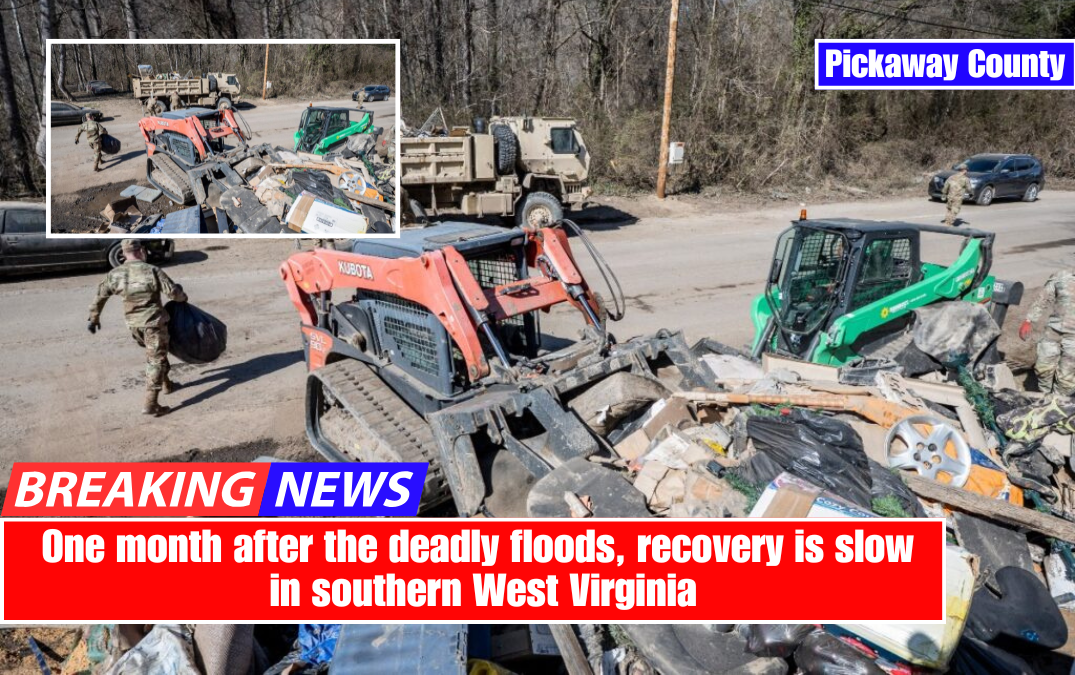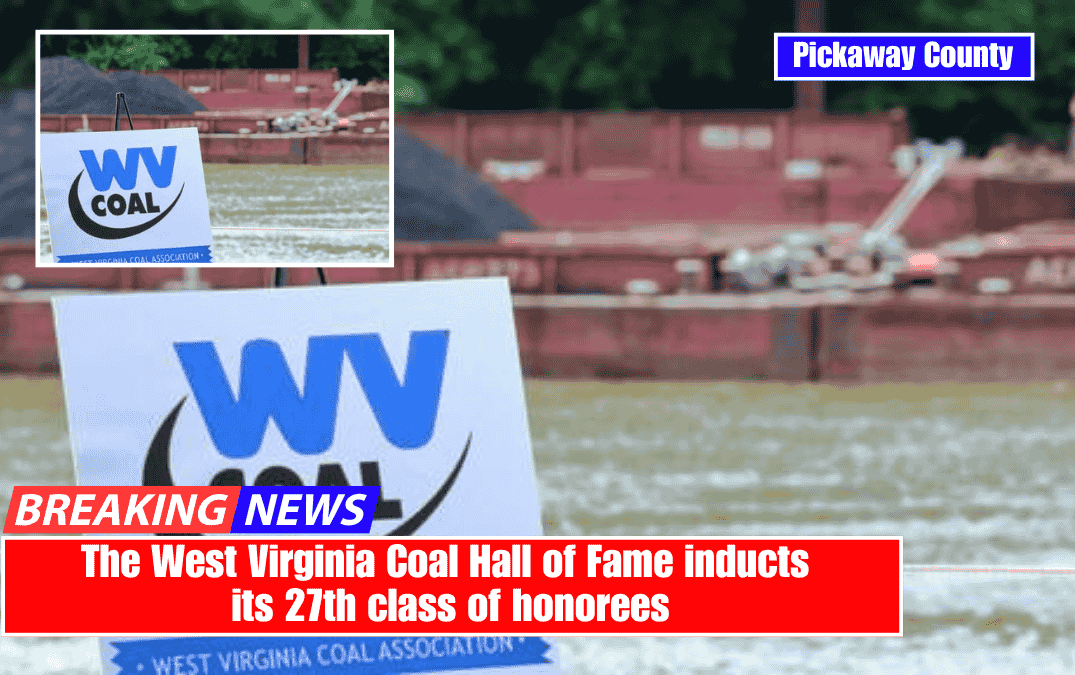Floods wreaked havoc on West Virginia’s southern counties a month ago, killing three people and injuring dozens in two other states. The long road to recovery is only beginning.
On a recent Wednesday night, as on many nights, there was a lively crowd at Morgantown’s music venue, 123 Pleasant Street. While music played on the main stage, vendors and artists in the coop next door sold their wares. But on this night, the proceeds went to relief efforts for West Virginians affected by the February floods.
“I don’t know if it’s necessarily the right approach, but it’s the approach that’s accessible to me, accessible to my friend,” Tommy Thompson, III, said.
Thompson is a musician from Morgantown who helped organise the benefit. He and his friends wanted to do what they could to help those affected by the floods.
“I believe that building community is extremely important. I truly believe that this starts from the bottom up. Relief efforts begin from the ground up,” Thompson stated. “We’ve seen a lot of the damage go unnoticed on the national and state levels, in government, and it’s really on us to provide some relief.”
In addition to the three deaths attributed to the flood in West Virginia, four people died in neighbouring Virginia, and the death toll in eastern Kentucky is approaching 25.
On February 17, Governor Patrick Morrisey requested a major disaster declaration for the 13 counties affected by the flooding, but the federal response has been slow. A presidential declaration of a major disaster was approved on February 26, but only for McDowell, Mercer, Mingo, and Wyoming counties.
Last week, the Federal Emergency Management Agency (FEMA) approved financial assistance for two more West Virginia counties. In Kentucky, ten counties have been approved. Virginia has yet to receive a federal declaration.
“Historically, the southern coalfields are a community in Appalachia that has been completely neglected,” said Cody Cannon, a standup comedian based in Morgantown who helped organise the benefit show.
“As someone who spent a large part of his youth in the southern coalfields, I think it’s the kind of thing where the community is strong because it’s the community who takes care of each other.”
Cannon was in the area during the flooding and estimated that recovery would take months in the best case scenario. He stated that the general consensus appears to be that people will have to help themselves in this process, which is why he wanted to hold a benefit.
“They’re still digging mud out of their homes,” he told me. “Even though the flood was a few weeks ago, this kind of thing, it’s the kind of thing that it’s gonna take, minimum, six months before these people are back on their feet.”
Zach Shrewsbury, a community organiser, has been coordinating the community response to the floods through his organisation BlueJay Rising. He stated that the level of devastation cannot be overstated, with people sheltering in churches and even cars while attempting to salvage their homes.
“You can drive through McDowell, Mingo counties, and you’ll see just everyone’s belongings on the side of the road, waiting to be picked up by a trash company or the National Guard,” Shrewsbury told me. “It’s like everything in the house, you understand. “It is tragic.”
Following the flood, 165 West Virginia National Guard members were dispatched to provide response and recovery assistance in Wyoming, Logan, Mercer, Mingo, McDowell, and Wayne counties. However, by early March, the number had dropped to slightly more than 100 Guard personnel.
According to Shrewsbury, while communication to population centres has improved in recent weeks, many isolated enclaves remain underserved, if not disconnected.
“There are many small areas, such as Anawolt. I believe we are probably the only organisation that provides them with everything they require, as best we can, because they are so difficult to reach,” he said.
Brad Davis pastors five churches in McDowell County, known as the Welch charge of The United Methodist Church. Like Shrewsbury, he stated that much of his outreach work since the flood, with organisations such as From Below: Rising Together for Coalfield Justice, has focused on the more isolated hollers, as well as the elderly and disabled.
“The community has really rallied around each other, neighbours helping neighbours, strangers helping strangers,” according to Davis. “Having said that, we still need a lot more help. It will be a long road to recovery, and we will require a significant increase in resources to get back on track.”
Davis stated that the vast majority of relief in the county has come from private and grassroots efforts such as the Morgantown benefit concert. He expressed his gratitude for the outpouring of support, but acknowledged that the need remains great.
Davis stated that mud and muck left by floodwaters must still be cleaned out of homes’ basements and ground floors. He claims that this highlights the region’s pre-existing issues, such as water quality, more than ever before.
“Prior to the flood, many of these communities were having issues with access to clean water,” Davis told reporters. “So now you have a situation where people in these water-impacted communities are having to try to clean up their homes, their businesses, churches, whatever the case may be, and using dirty water to do it.”
The federal government’s major disaster declaration is an important step towards recovery, but Davis notes that it only allows for personal loans and relief.
“It was much needed, and we are grateful for that, but we also need the public assistance component that goes along with that,” he told me. “We need the full gamut of resources that both the federal government and the state government can bring to bear here in order for us to be able to recover.”
Following the concert in Morgantown, Cannon and Thompson estimate they raised around $4,000 for recovery efforts, in addition to donations of cleaning supplies, water, and food.
However, flood victims will require more resources and awareness as they embark on the lengthy recovery process.















